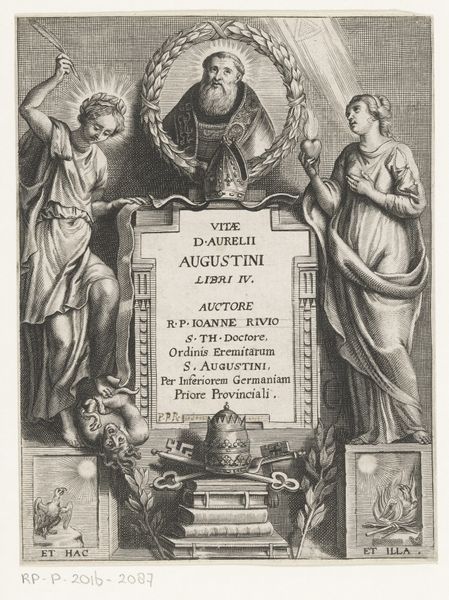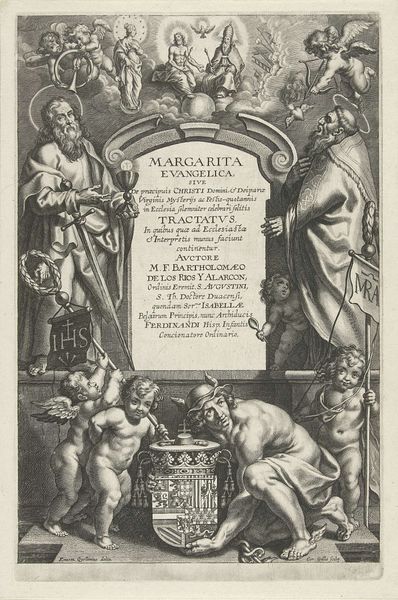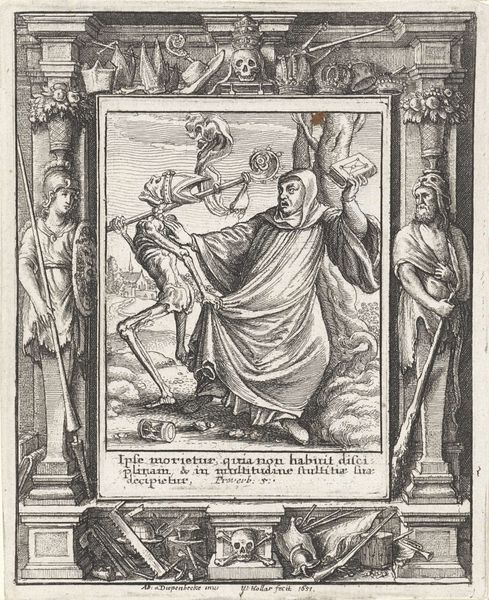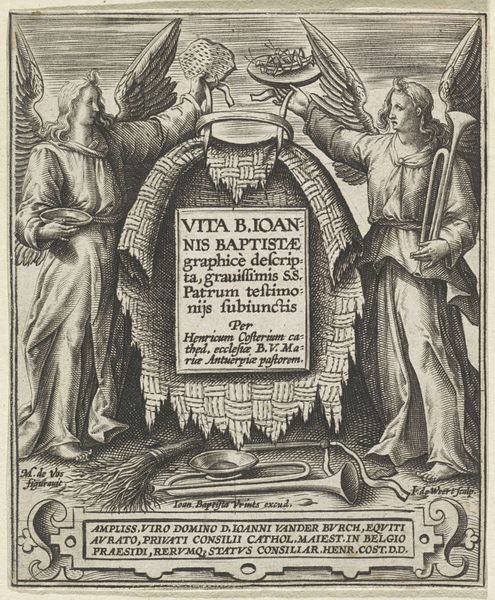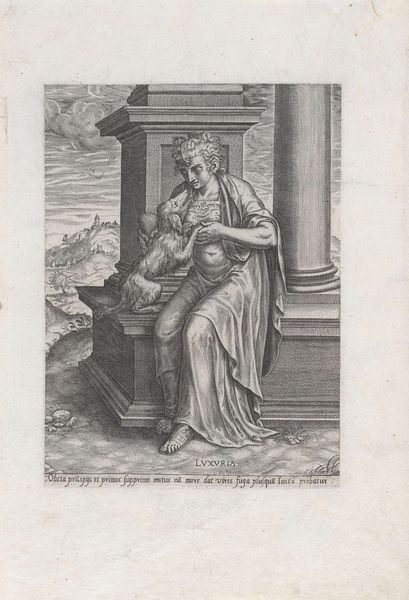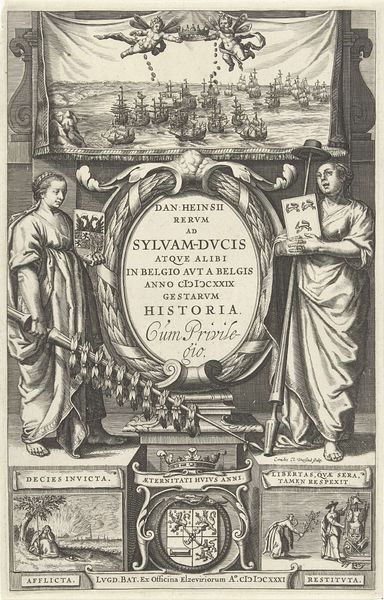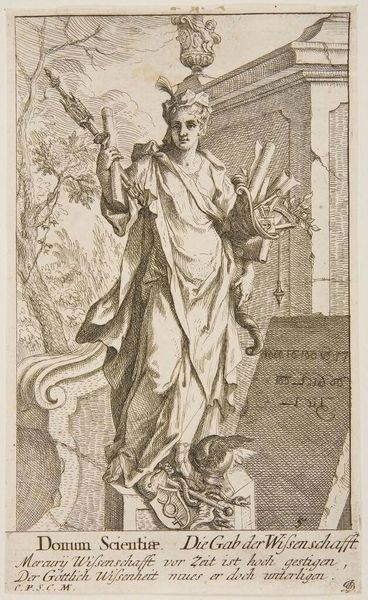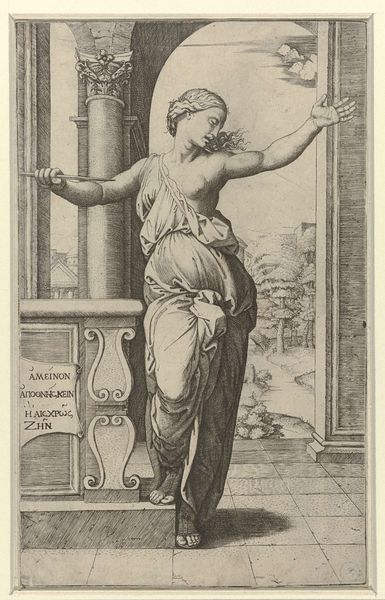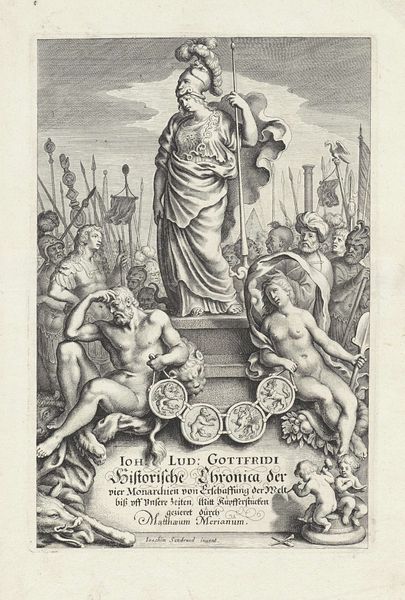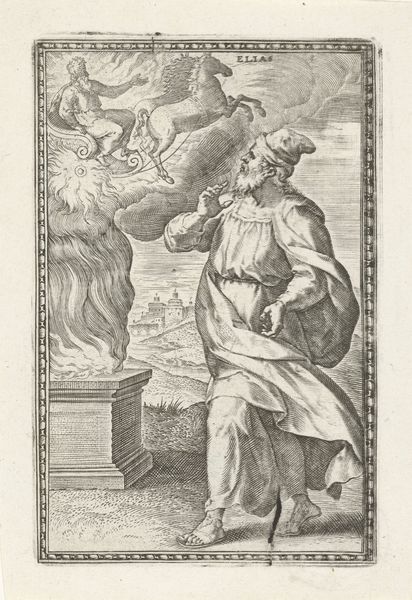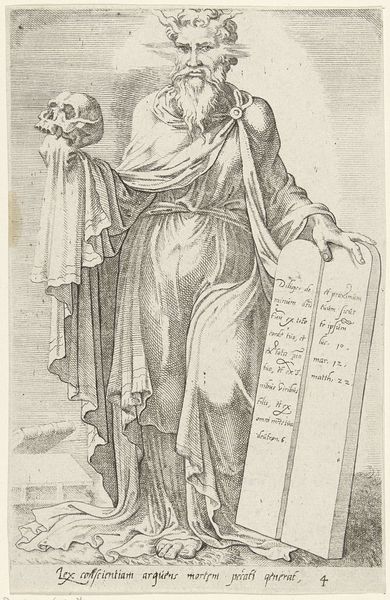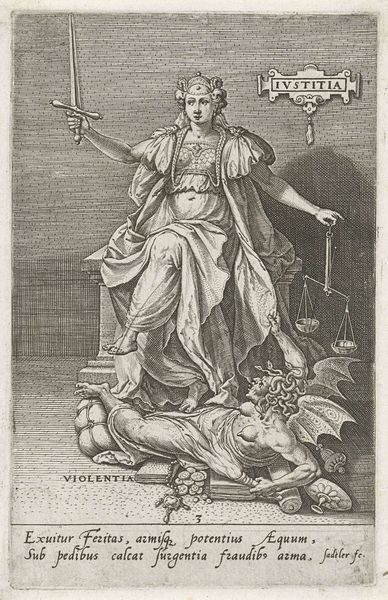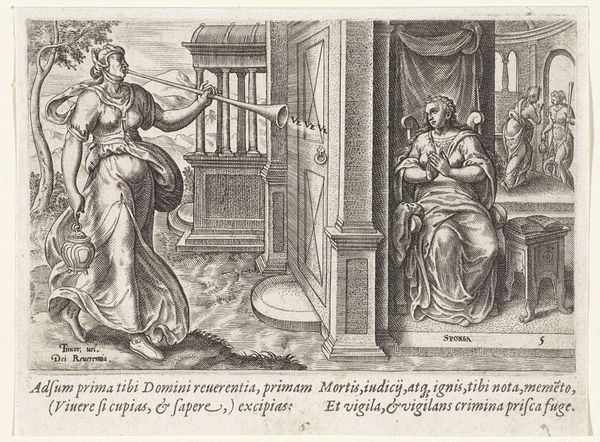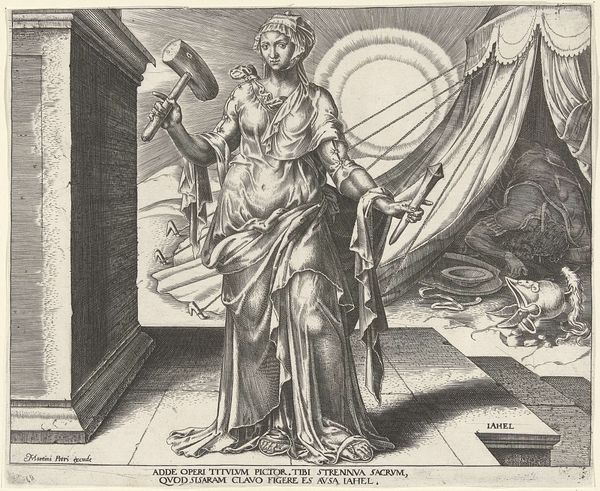
Moneta met weegschaal en hoorn des overvloeds staat voor nis bij schild met titel 1591 - 1615
0:00
0:00
print, engraving
#
allegory
#
baroque
# print
#
pen illustration
#
old engraving style
#
form
#
line
#
history-painting
#
engraving
Dimensions: height 171 mm, width 128 mm
Copyright: Rijks Museum: Open Domain
Curator: Here we have "Moneta met weegschaal en hoorn des overvloeds staat voor nis bij schild met titel," an engraving created between 1591 and 1615 by Jacques de Bie. Editor: The immediate impression I get is one of stoicism and considered judgment. The stark lines of the engraving emphasize a rational, almost cold, interpretation of abundance. Curator: That's interesting. From a historical perspective, consider the role of Moneta, the Roman goddess associated with coinage. De Bie's representation goes beyond simple portraiture. The scales, the cornucopia overflowing with fruit, the very architecture behind her—they all signify a complex system of value and exchange. The image invites us to consider the era's understanding of wealth, its distribution, and its moral implications within a developing capitalist framework. Editor: Indeed. The weight of the scales, then, is not just literal but also symbolic, weighing not just material wealth but the societal impact of monetary systems. I also note the overt display of power with that plaque framed in laurel branches containing Latin phrases celebrating Imperial Rome’s coinage dating from Julius Caesar, indicating the role of industry by De Bie. And let us not miss how whiteness plays into the notion of “value.” Curator: Precisely. This portrayal reinforces existing power structures through classical ideals. It ties the idea of wealth and good governance to an imperial legacy. We could analyze this in the context of colonial expansion and the role of money in those processes, exploring how ideas of civilization and barbarity are coded within this very image. The composition itself places Moneta—and what she represents—firmly within a historical lineage of European dominance. Editor: And I would argue, the sharp, unforgiving lines of the engraving, while beautiful, contribute to this unyielding sense of authority. Perhaps not neutral tools for objective measurement and trade but instruments of control with deep-rooted repercussions. Curator: Ultimately, De Bie's engraving compels us to consider the historical forces that have shaped our relationship with money and power and how seemingly objective concepts are laden with social and political meaning. Editor: Agreed. A piece that beautifully captures and subtly reinforces how perceptions of value intertwine with sociopolitical narratives, demanding constant reevaluation through a critical lens.
Comments
No comments
Be the first to comment and join the conversation on the ultimate creative platform.
